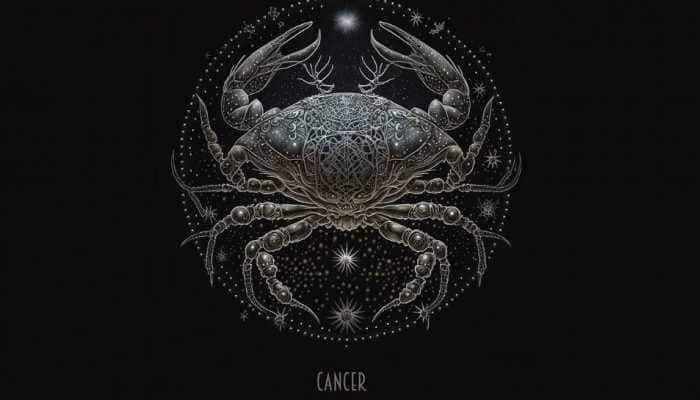Sudden Cardiac Arrest: Signs, Risk Factors, Causes And Treatment- Steps To Perform CPR
The abrupt halt of all heart function is known as sudden cardiac arrest (SCA). Here we help you recognize the early signs and tell you how SCA is different from heart attack.
- Sudden cardiac arrest (SCA) is the sudden loss of all heart activity due to an irregular heart rhythm
- Without immediate treatment, sudden cardiac arrest can lead to death
- Sudden cardiac arrest isn't the same as a heart attack
Trending Photos
) A heart attack can cause a change in the heart's electrical activity that leads to sudden cardiac arrest.
A heart attack can cause a change in the heart's electrical activity that leads to sudden cardiac arrest. Cardiac arrest: When your heart stops beating suddenly in an instance is known as sudden cardiac arrest. Your heart will stop pumping blood if there is an electrical problem. Your cells can't get the oxygen they require as a result. Because your cells aren't getting enough oxygen, abrupt cardiac arrest can quickly become fatal. The chances of survival are highest when assistance is provided right away.
In an interview with Zee English, Dr Saikat Kanjilal, Consultant Interventional Cardiologist, Manipal Hospital talks about the causes, symptoms and treatment options for a sudden caridac arrest.
What is Sudden Cardiac Arrest?
Sudden cardiac arrest (SCA) is a medical emergency and potentially fatal condition caused when the heart suddenly stops beating. Failure to initiate immediate treatment would lead to death and is called "sudden cardiac death" or SCD.
The heart has a potent electrical system that regulates the normal rhythmic beating of the heart. Abnormal functioning of this electrical system may trigger arrhythmias (abnormal heart rhythm) and lead to SCA.
Heart Attack Vs Sudden Cardiac Arrest: What is the difference
SCA is different from a heart attack. In a heart attack, the heart fails to pump efficiently as there is blockage due to cholesterol deposits in 1 or more of the arteries that bring blood to the heart. Damage to the heart caused by a heart attack can lead to a SCA. Whereas SCA is a pre-terminal electrical event caused by various cardiac and non-cardiac disorders.
What causes A Sudden Cardiac Arrest (SCA)?
SCA is most likely to happen in people with known or unknown pre existing heart problems and a few non-cardiac causes.
The cardiac causes for SCA include:
- Coronary heart disease
- Heart attack
- Thickening/enlargement/weakening of the heart muscle
- Abnormalities in heart’s electrical system like Long QT syndrome and Brugada syndrome
- Heart failure
- Heart valve diseases
- Congenital heart disease.
- Genetic disorders
Non-cardiac causes of SCA include:
- Certain lung problems like pulmonary embolism (clots in lung arteries)
- Drowning, electrocution, or severe trauma
- Substance abuse (cocaine, heroin, or meth)
- Electrolyte imbalance
- Intracranial bleed
- Sepsis
Are there any risk factors for A Sudden Cardiac Arrest?
- Personal or Family history of CAD or other cardiac diseases such as arrhythmias, congenital cardiac diseases, etc.
- Past medical history of heart attack or SCA
- Lifestyle factors and habits mainly including smoking, sedentary lifestyle, overweight and obesity
- Comorbidities such as high blood pressure, high blood cholesterol, and uncontrolled diabetes
- Progressing age
- Obstructive sleep apnea
- Chronic kidney disease
Although
Sudden Cardiac Arrest: Symptoms
In the vast majority of cases, SCA happens without any "warning" symptoms. But in symptomatic cases, the commonly experienced symptoms include:
- Chest pain
- Trouble breathing or loss of breath
- Racing heart
- Feeling weak, dizzy or throwing up
- Fainting or loss of consciousness
How to Diagnose A Cardiac Arrest?
SCA is diagnosed clinically without major tests. Since SCA is a fatal condition, often the majority of SCA cases are diagnosed post-mortem. Diagnostic tests are done to look for the cause of SCA and treat it if it can be treated. The tests usually include:
- Electrocardiogram (ECG)
- Chest X-ray
- Blood tests to determine the chemical markers of various diseases
- Echocardiogram (or "echo")
- Other imaging tests like cardiac MRI
- Electrophysiological study
- Family screening and genetic testing to ascertain risk of SCA
- Cardiac catheterization
How Is A Sudden Cardiac Arrest Treated?
SCA needs immediate intervention:
- Cardiopulmonary resuscitation (CPR) to revive and facilitate blood and oxygen circulation
- Treatment strategies to maintain blood pressure, breathing and oxygenation (involving measures like ventilation and ECMO).
- Defibrillation
Once the heart resumes beating and blood circulation restarts, further tests and treatment can be initiated based on the patient history and findings
Dr Saikat says, " Doctors sometimes start a treatment called "hypothermia" to cool the body down in patients who are unresponsive after successful resuscitation from SCA (usually to 33-36 degrees Celsius) for 1 to 2 days to reduce the risk of brain injury one of the most common cause of death after SCA."
Specific therapies can be administered after resuscitation such as:
- Coronary angioplasty
- Correction of electrolyte and metabolic imbalances
- Treatment of infection and sepsis
- Treatment of specific electrical disorders
- Implantable cardioverter-defibrillator (ICD)
Life After Surviving SCA
It depends, in part, on what caused SCA and how quickly it was treated. Some people may recover without any long-term problems. Usually majority of the survivors report with long-term brain problems.
How to do CPR?
If the victim is not breathing, perform CPR. Push hard and fast on the person's chest — about 100 to 120 pushes a minute. Check the person's airway if you are skilled in CPR. Then deliver rescue breaths after every 30 compressions.
Just keep performing chest compressions if you are untrained. Permit the chest to fully rise in between compressions. Continue doing this until help is at hand or emergency services arrive.
In conclusion, most people (about 90%) who have a SCA outside of a hospital don’t survive due to lack of immediate intervention. Awareness of the general public and training in basic cardio-pulmonary resuscitation until the arrival of medical help, along with ready availability of automated external defibrillators (AEDs) in public places is pivotal in saving lives.
Live Tv







)
)
)
)
)
)
)
)
)
)
